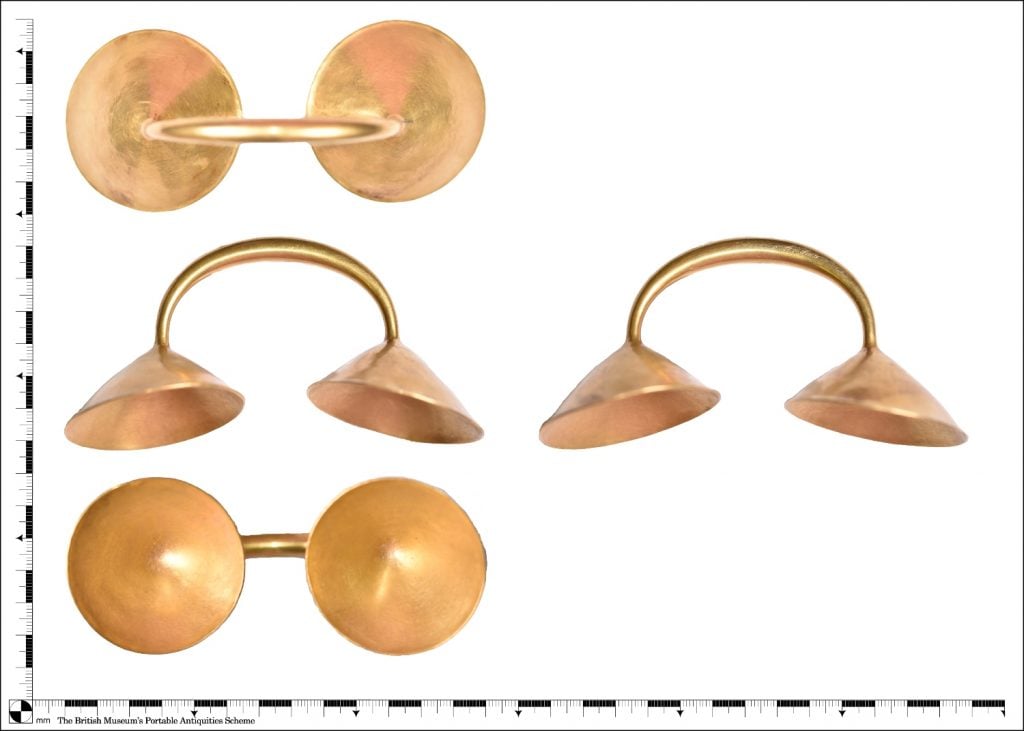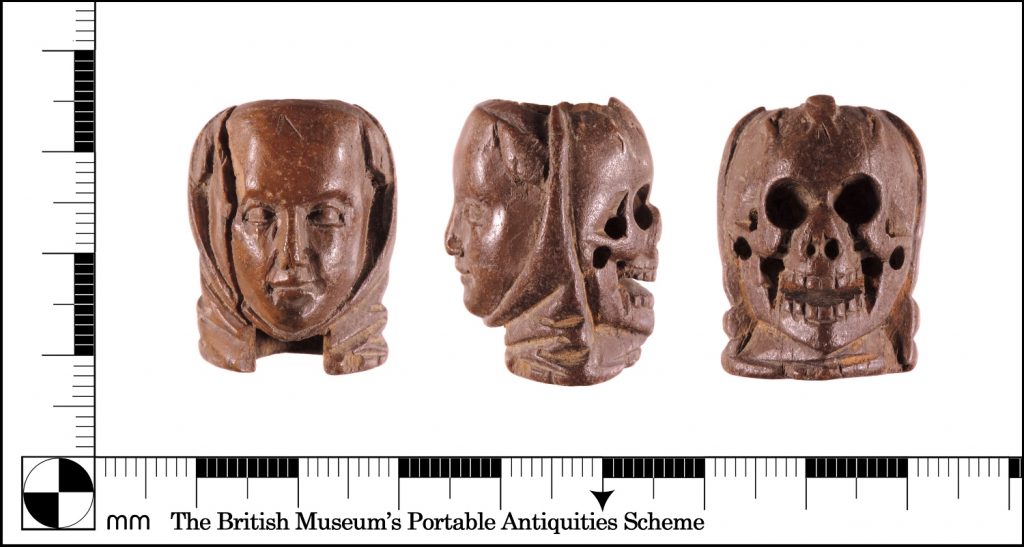Archaeology & History
An Amateur Metal Detectorist Makes a ‘One in a Billion’ Find
'I had a much higher chance of winning the lottery!' Jonathan Needham said of his ancient discovery.

'I had a much higher chance of winning the lottery!' Jonathan Needham said of his ancient discovery.

Jo Lawson-Tancred

An amateur metal detectorist was in for an exciting surprise on a recent walk in Staffordshire, England. Jonathan Needham, a retired tree surgeon, chanced upon a gold trinket that he thought might be a door handle. It has since been identified by experts from the British Museum as a 3,000-year-old dress fastener.
The ages-old accessory would likely have once held closed the skirt, dress, or cloak of a high-ranking individual. With its elegant bow-shaped body connecting two cone-shaped ends, it has been connected to the tradition of Irish goldsmiths whose work was admired across Europe during the Bronze Age. Only seven of its kind have ever been discovered in England and Wales.
“We were punching the roof at what we had found,” he recalled to the BBC. The unique item will likely be acquired by a museum and a reward will be split between Needham and the owner of the land where it was found.
After making his discovery Needham said, “I didn’t sleep a wink that night. I knew it was mega special and I couldn’t stop looking at it. This is truly a one-in-a-billion find—I had a much higher chance of winning the lottery.”

Carved bone rosary bead. Photo: © The Trustees of the British Museum.
The precious object was touted as one of the highlights in the British Museum’s latest Portable Antiquities Scheme (PAS) report, which revealed that in the year 2022 there were 53,490 new archaeological discoveries made across England, Wales, and Northern Ireland. Of these, a record-breaking 1,378 were classed as “treasure,” meaning 2022 was a bumper year for the unearthing of coins, precious metals, and ancient jewelry.
Other exciting discoveries include a bone rosary bead with the face of a young woman carved on one side and a skull on the other, which was unearthed by Caroline Nunnely while mudlarking along the shores of the River Thames in London.
The British museum oversees the administration of the U.K.’s Treasure Act 1996, requires all discoveries of treasure to be reported. The law defines treasure as any metallic object that is either at least 10 percent gold or silver or has some other feature that makes it of exceptional cultural value. The BM also oversees the voluntary Portable Antiquities Scheme for reporting non-treasure finds, and over 1.6 million treasures and non-treasures have so far been recorded on an online database.